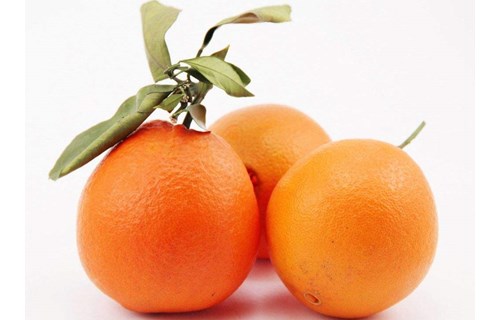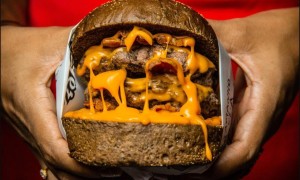美国佛罗里达的专家发现,挤压橙子皮可能启发新的药物雾化方法,或者有助于在桥梁发生事故之前找到隐患所在。

In the search for a new way to deliver airborne medication, researchers have turned to orange peels.
为了寻求药物雾化的新方法,研究人员将目光投向了橙子皮。
Engineering Assistant Professor Andrew K. Dickerson and graduate student Nicholas M. Smith from the University of Central Florida have figured out the mechanics of how oranges release that thin stream of fragrant oil when squeezed.
工程学助理教授安德鲁.迪克森与研究生尼古拉斯.史密斯弄清了橙子受到挤压后喷出少许香精油的原理。
They characterized the orange peels’ structure and figured out the role the layers have to create the microjet dynamic. By mimicking nature’s mechanism of an orange layer, pharmaceutical companies may be able to develop a less expensive and less complex way to deliver airborne medication.
他们研究了橙子皮的结构,弄清了不同层次的结构在橙子皮喷射香精油的过程中所发挥的作用。通过模仿橙子皮的天然结构,制药企业或许可以开发出一种更廉价、更简单的气雾剂。
Florida’s fruit is complex. Its hard outer layer protects the fruit, and a white spongy layer just below the skin has microscopic reservoirs of oil in hidden pockets. The spongy material absorbs impact, but when squeezed to a critical pressure it pushes up and tears open a minute section of the hard outer-layer to spray its fragrant stream. These microjets are small but fast, exiting their cavities at 22 mph on average by accelerating 5,000 Gs, which is equivalent to about 1,000 times the force astronauts feels at launch.
佛罗里达的这种水果结构是相当复杂的。它坚硬的表皮负责保护果实,表皮下方有一层白色海绵状物质,内含许多微小的液囊,用来储存香精油。这层海绵状物质能够吸收冲击力,但挤压力如果突破临界点,海绵层就会向外推挤,在表皮上撕开微小的裂口,喷出香精油。喷出的液体不多,但速度极快,平均时速高达22英里,加速度达到5000G,相当于火箭发射宇航员感受到的加速度的1000倍。
"There are several potential applications," Smith said. "For example, for asthmatics, you could have a small slice of material which would aerosolize emergency medication that you currently find in expensive, multi-use inhalers. this approach may be less expensive and biodegradable."
史密斯说:“这一原理有多种潜在应用方式。比如对哮喘患者来说,只需一丁点应急药物就可以实现雾化,而不需要像现在这样使用昂贵的可多次使用的雾化器。新的雾化方法可能更廉价,生物降解效果也更好。”
An orange peel releases an oily substance, and the dynamics should hold for other types of liquids, the researchers said.
研究人员说,橙子皮会释放出一种油性物质,这种动力对于其他类型的液体也适用。
But there’s still some research needed before putting the orange peel approach to work delivering medication.
不过,在把“橙子皮原理”应用在药品雾化领域之前,科学家还需要进行更多研究。
"First, we need to work out sizes and proportions," Dickerson said. "It’s important to understand exactly how the microjets work and how to tune their stability for medical applications. The size of droplets and the amount of medication they carry is critical. We’ve got a ways to go before applications can be explored."
迪克森说:“首先,我们需要搞清液珠大小和药物比例。并且,准确理解喷射现象的工作原理,调整其稳定性,以便适用于药物治疗,这也是非常重要的。液珠大小和药物比例非常关键。在应用开发前,我们还有很长的路要走。”
But when that happens, the possibilities are only limited by the imagination.
不过,一旦研究成功,未来的可能性将多到难以想象。
"Imagine a self-diagnosing bridge," Dickerson said. "It would have an orange-like skin layer and when you were approaching material failure, you would get a preventative warning, a color change perhaps."
迪克森说:“你可以想象桥梁将具备自我诊断能力。桥梁外层可以加一层类似于橙子外皮那样的结构,如果材料即将老化,你会提前得到预警,比如桥面颜色发生变化。”
The findings appear in Proceedings from the National Academy of Sciences.
这项研究结果发表在《美国国家科学院院刊》上。







